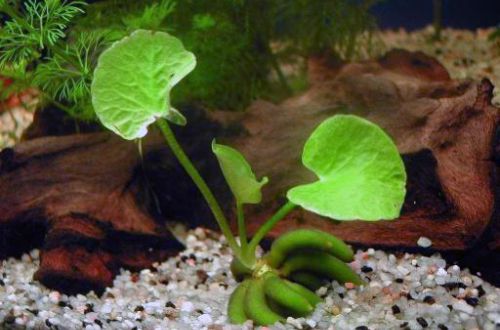
Anubias petit
Anubias petite, scientific name Anubias barteri var. Nana variety ‘Petite’, also known as ‘Bonsai’. There is no exact information about the origin of this variety. According to one version, this plant comes from Cameroon and is a natural mutation of Anubias nan. According to another version, this is a breeding form of the same Anubias dwarf, which appeared in one of the commercial nurseries in Singapore (Southeast Asia).
Anubias petite is identical in all its characteristics to Anubias nana, but differs in even more modest size. The bush reaches a height of no more than 6 cm (up to 20 cm wide), and the leaves are only about 3 cm in size. It grows very slowly, keeping its original squat shape with light green, ovoid leaves. This feature, coupled with its small size, has determined the popularity of Anubias petit in professional aquascaping, in particular, in miniature natural aquariums.
For its compactness and decorativeness, this variety of Anubias received another name – Bonsai.
The plant is easy to care for. It does not require special lighting settings and does not need a nutrient substrate. The plant receives all the trace elements necessary for growth through water.
Due to the low growth rate, there is a high probability of the formation of dotted algae (Xenococus) on the leaves. One way to solve the problem is to place Anubias petit in a shaded area of the aquarium.
Like other Anubias, this plant can be planted in the ground. However, in this case, you can not bury the rhizome, otherwise it may rot. Anubias petite can also grow on snags or rocks, if secured with nylon string or simply pinched between rocks.
Basic information:
- Difficulty of growing – simple
- Growth rates are low
- Temperature — 12-30°С
- Value pH — 6.0–8.0
- Water hardness – 1-20GH
- Illumination level – any
- Use in an aquarium – foreground and middle ground
- Suitability for a small aquarium – yes
- spawning plant – no
- Able to grow on snags, stones – yes
- Able to grow among herbivorous fish – yes
- Suitable for paludariums – yes




